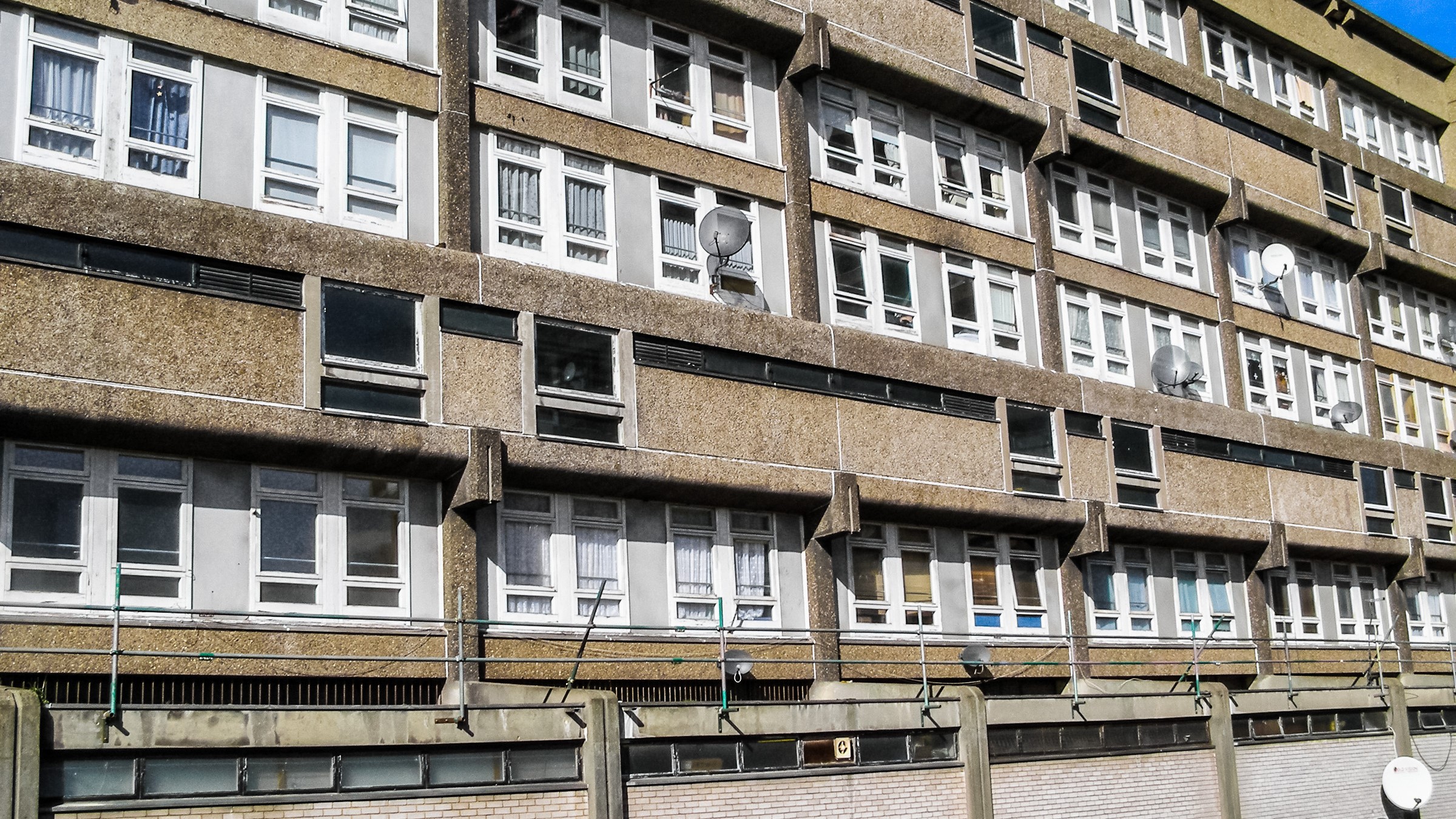
The height and number of storeys of a building have been critical to safety legislation and guidance recently introduced in England for residential blocks.
But while surveyors have always been expected to determine the height of a building – even before RICS was founded – the UK government's current building safety programme has confused matters.
Purpose of measurement determines methodology
The simplest way to begin when you are asked to measure a building's height is a question: what is the purpose of the measurement?
- to comply with the Building Regulations
- to establish whether the building is a higher-risk building (HRB) under the Building Safety Act 2022
- to determine whether it is a relevant building, as defined under section 117 of the Building Safety Act 2022 and the Fire Safety (England) Regulations 2022
- to apply for a remediation order or to seek funding from the government's Building Safety Fund or Cladding Safety Scheme.
Once you have established which of these is the primary reason for measuring the height, you can then move to the next stage, which is to apply the relevant statute and guidance.
- For the purposes of the Building Regulations, the applicable legislation is the Building Act 1984, as amended by the 2022 Act, using the diagrams in Fire safety: Approved Document B Volume 1: Dwellings.
- Definition as an HRB under the 2022 Act and subsequent secondary legislation has required registration with the Building Safety Regulator (BSR) since 1 October 2023. Only HRBs can apply to the Building Safety Fund.
- A definition as a relevant building under the 2022 Act and the Fire Safety (England) Regulations 2022 is necessary for applications to the government's Cladding Safety Scheme for buildings of more than 11m.
Definitions of height and storeys vary
Each of these pieces of legislation has its own definition, though, which vary slightly from one another – so surveyors should beware.
First, as defined in section 65 of the 2022 Act, an HRB in England 'is at least 18 metres in height or has at least seven storeys, and … contains at least two residential units'. So far, so easy.
However, while section 65 defined what an HRB was, the act did not determine how to measure height or storeys, but instead left this to secondary legislation.
So, when the Higher-Risk Buildings (Descriptions and Supplementary Provisions) Regulations 2023 were published on 6 April, we knew what were – and perhaps more importantly what were not – HRBs.
Height was now more accurately defined for three different circumstances: a new building being designed and constructed; an existing building; or a building that becomes an HRB during occupation.
Generally, though, the height is defined by measuring from the ground level to the top of the floor surface of the uppermost habitable storey, excluding rooftop plant rooms and the like. Roof terraces should now be excluded too following the Upper Tribunal decision on 28 May 2025 on appeal of the First Tier Tribunal ‘Smoke House’ case involving a remediation order. At the time of writing, the Ministry of Housing, Communities and Local Government (MHCLG) are consulting with the Building Safety Regulator on issuing further guidance on this point.
'Each piece of legislation has its own definition, which vary slightly – so surveyors should beware'
Tribunal case prompts guidance revision
Subsequent to the guidance, however, a First-Tier Tribunal case in summer 2023 prompted some confusion on the issue of height.
On 16 October 2023 the Department for Levelling Up, Housing and Communities – now known as MHCLG – subsequently published further guidance on how to use and apply for remediation orders.
Such orders are available to councils and others under the 2022 Act as a means of enforcing remediation, bolstering powers already used by local authorities under the Housing Act 2004.
Under the 2023 Regulations, the height of the building is measured from the lowest adjoining ground level to the highest habitable floor level, while storeys that are not counted include: basements where the entire ceiling is below ground; rooftop plant rooms; and mezzanines, unless these take up more than half a floor.
Height is measured and storeys counted in the same way for relevant buildings under section 117 of the 2022 Act with the exception of basement plant rooms, which are all excluded.
However, the 2022 Act also has a shorter threshold for relevant buildings, defining them in section 117 as more than 11m or at least five storeys, again measuring from ground level to the top habitable floor surface.
Meanwhile, the Building Regulations 2010, Fire Safety: Approved Document B, BS 9999, and BS 9991, define height measurements in various ways.
Apart from a general definition of height that is rarely used, Building Regulation 7 – which bans combustible cladding on residential buildings of more than 18m – has more specific measurement methods that resemble but are not identical to those in the 2023 Regulations and 2022 Act.
Moreover, regulation 7 only covers buildings of this height that contain one or more dwellings, an institution, or a room for residential purposes.
Fire Safety: Approved Document B in turn contains an even more specific definition. Suffice to say that diagram D6 of the document clarifies that the height of the top storey is measured from the upper floor surface of the top floor to ground level on the lowest side of the building.
Meanwhile, diagram D5 establishes that storeys should be counted from the position that gives the greatest number, excluding any basements. BS 9991 defers to the definition in Fire Safety: Approved Document B.
In contrast, if remediation work is seeking support from the government's Building Safety Fund, this is only available where buildings are 18m or above; but there is a 300mm tolerance.
Measurements should be made in accordance with diagram D6 of Fire Safety: Approved Document B, taken from the lowest external ground level to the finished floor level of the top occupied storey.
Understand how funding determines approach
But each of these approaches is unique and mutually exclusive.
You cannot, for example, use the method of measurement described in the 2023 Regulations to determine eligibility for a remediation order, or which Building Regulations or standards are applicable.
RICS recommends you consult the original legislation, regulations or standards closely in each case and make clear in your report when you are surveying a building precisely how and why you are measuring height or counting storeys.
This is also recommended when confirming instructions with a client in writing at the outset, so that there is no later dispute as to the purpose for which you are measuring the height.
Doing so is especially important because it is easy now to establish the height in accordance with the wrong criteria and allowances.
In some cases, all the different criteria will apply: for example, when a 20-storey building is subject to a remediation order to correct combustible cladding.
Nevertheless, it is important in such cases to take care about how each issue is dealt with and ask yourself the following questions.
- Does the building need a building regulations application, for example, a firefighting lift or non-combustible cladding under Fire Safety:Approved Document B or regulation 7?
- Can you apply for a remediation order under 2022 Act?
- Do I have to register my HRB with the Building Safety Regulator, as per the October 2023 Regulations?
- Can I apply to the Building Safety Fund or Cladding Safety Scheme?
So, although determining the height of a residential building can be confusing after the introduction of the 2022 Act and secondary regulations, professionals need to establish why the measurement is being made to determine which methodology to use.
A version of this article was originally published on 6 February 2024.
'Make clear in your report when you are surveying a building precisely how and why you are measuring height or counting storeys'
Enabling RICS SME members to thrive
At RICS, we want our SME members to flourish. Our SME Business Support Hub is a great place to start finding out more.
Whether an experienced or start-up SME, you'll find tailored support and resources, such as:
- guidance on business models
- statutory requirements
- insurance
- financial management
- marketing and promotion
- practical advice on aspects of buying, selling or leasing property.
We also send a monthly SME newsletter, sharing relevant support, insight and knowledge. You can sign up for this by emailing RICS directly.
Our quarterly UK Economy and property market update is also designed with SMEs in mind, providing the kind of detailed analysis and insight that may otherwise be out of reach. We conduct regular webinars as well, to take members through the latest updates and provide a forum for their questions.




